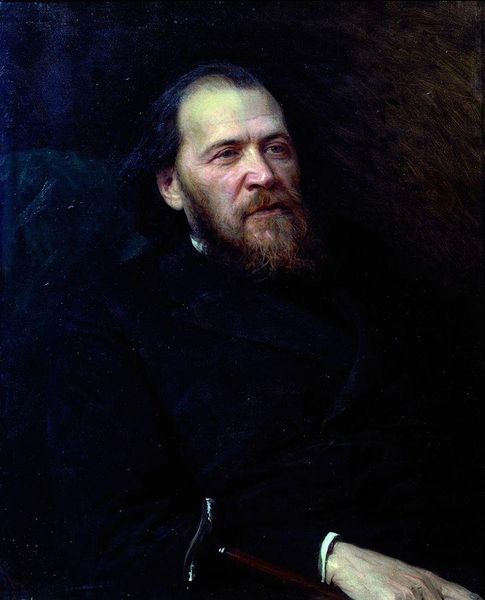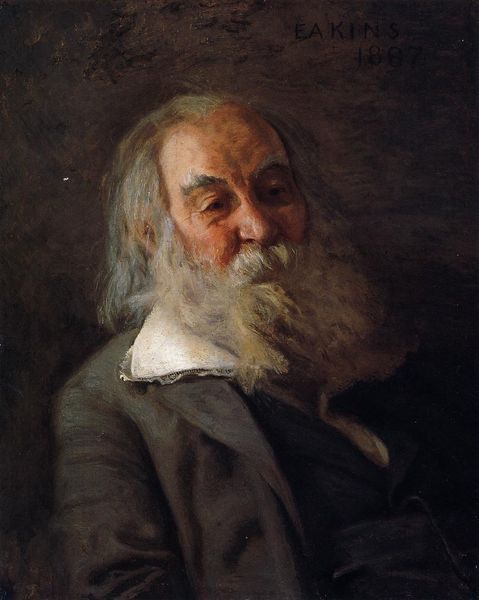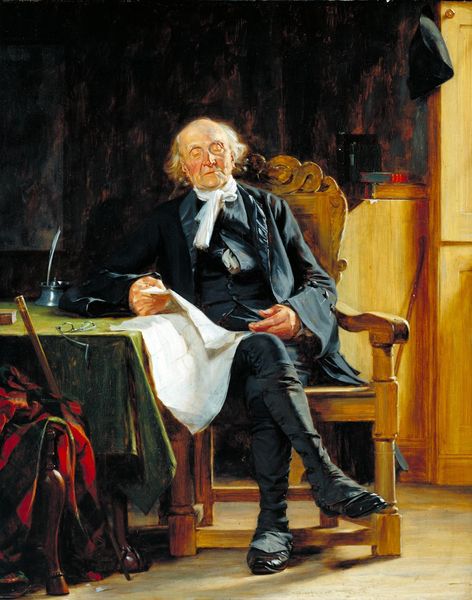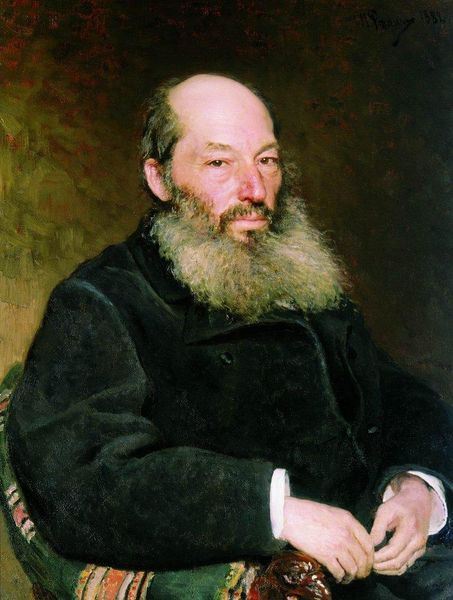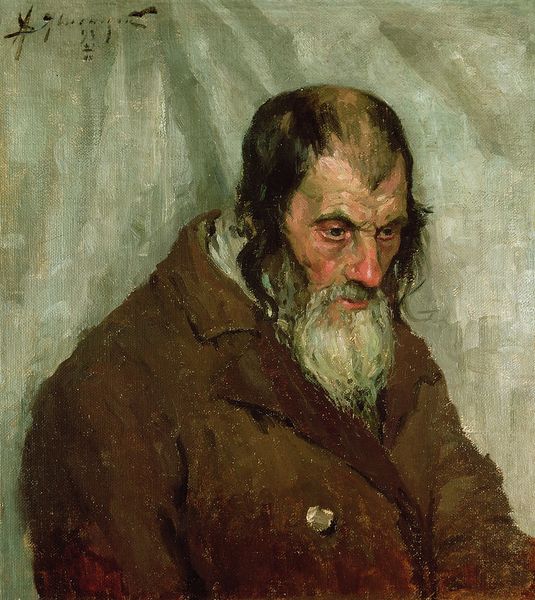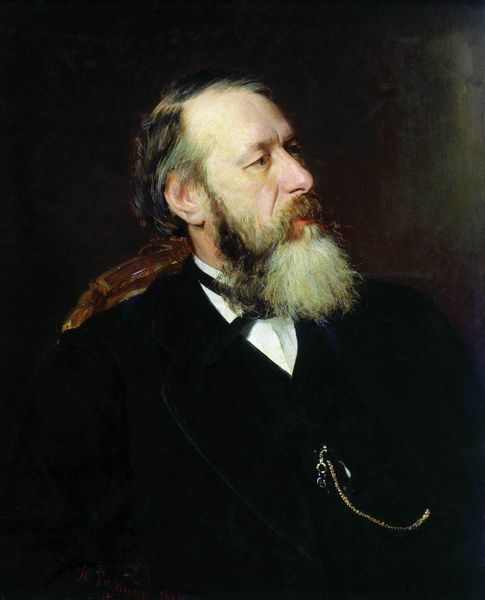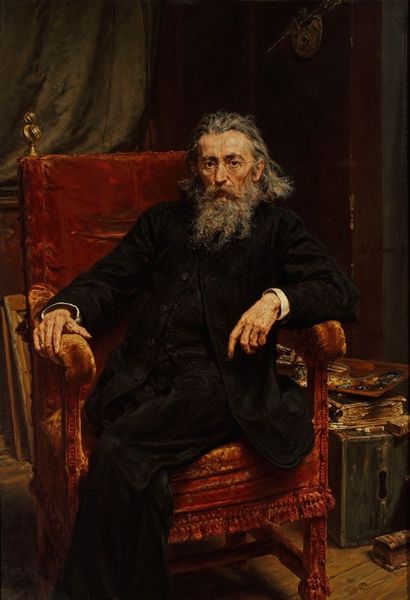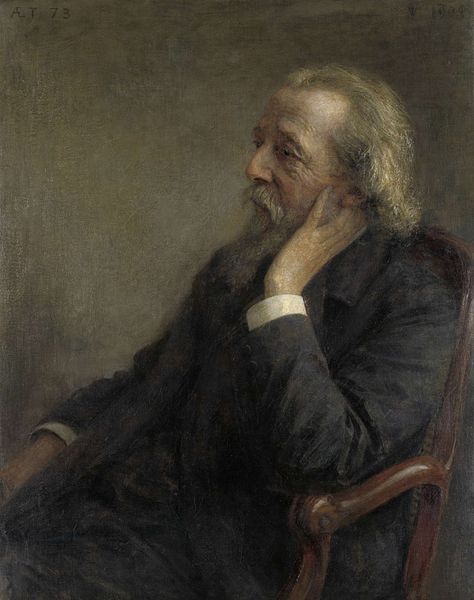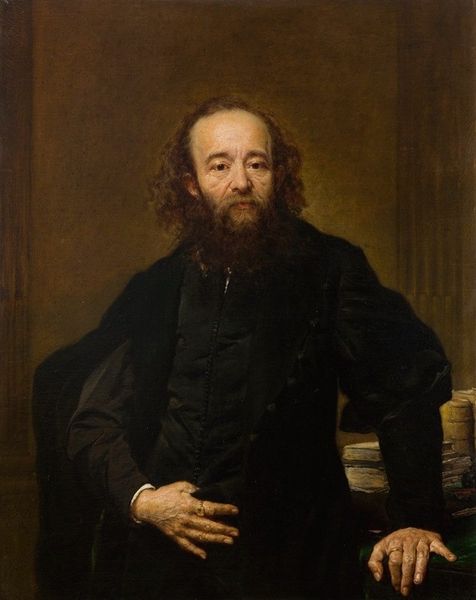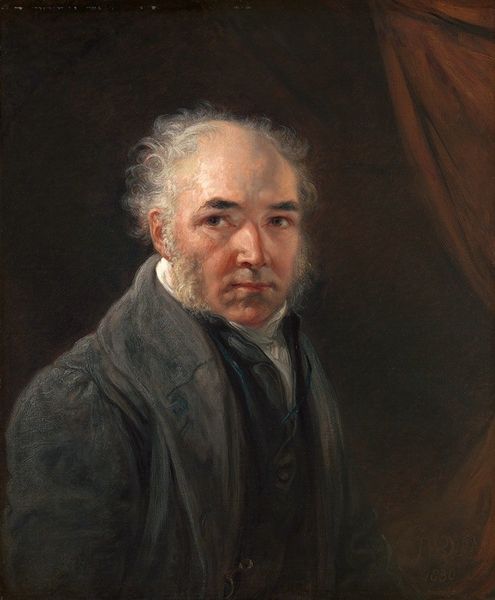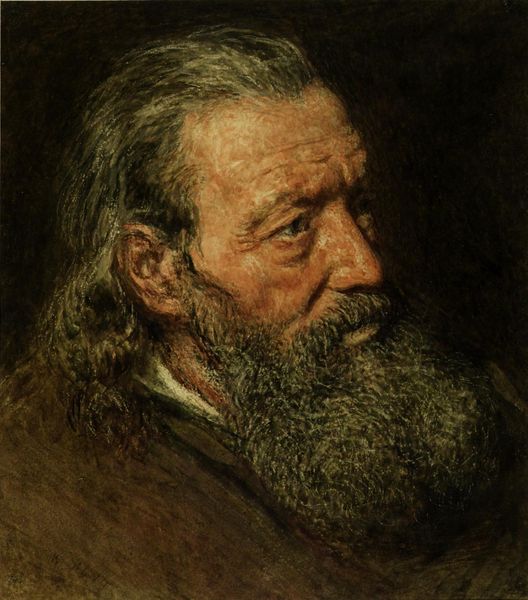
Copyright: Public domain
Curator: Kramskoy painted this portrait of Sergei Timofeevich Aksakov in 1878 using oil paint. Editor: It's arresting. The gloominess, offset by that small but impactful slash of red at his throat, conveys a profound sense of...resignation, maybe? Curator: Indeed. Aksakov, a renowned writer, was also a complex figure embedded within Russia's social and intellectual landscape of the 19th century. He grappled with serfdom and evolving national identities. How might that inform the tone? Editor: Well, consider the palette itself. The muted greys and browns seem to solidify into form; it's almost sculptural. Note how Kramskoy uses light—it sculpts Aksakov's face and highlights the textures of his beard and clothing. Curator: And consider Aksakov’s own literary contributions, which sought to idealize pre-reform Russia. We might ask whose perspectives were elevated within those idealizations, and at whose expense? His traditionalist stance has certainly faced scrutiny in light of social justice. Editor: I appreciate that. But, formally, what I find striking is how Kramskoy uses those formal techniques to create this quiet intensity. The way Aksakov grips his cane—it draws our eye and speaks to vulnerability, or perhaps to an assertion of waning authority. Curator: Certainly. That cane also signifies a landed gentry existence increasingly threatened by societal shifts. His gaze carries the weight of a generation confronting irreversible changes in Russia’s social fabric. A shift toward increased industrialization threatened established hierarchies. Editor: Yes, the textures imply lived experiences, but the overall composition creates balance, doesn't it? Even a sense of stately poise? There’s order amidst the chaos. The artist really controlled and conveyed an intensity that I initially didn't expect to discover. Curator: Placing Aksakov in the broader sweep of his time allows us to contemplate whose stories dominate history, how artists negotiate those narratives, and how perceptions of legacy shift across time. It's a powerful reminder to contextualize, rather than take at face value, these "objective" portrayals. Editor: A thoughtful reconsideration, truly, as that dark ground against which Aksakov emerges holds much more depth. Thank you for expanding how I see and feel this image.
Comments
No comments
Be the first to comment and join the conversation on the ultimate creative platform.
